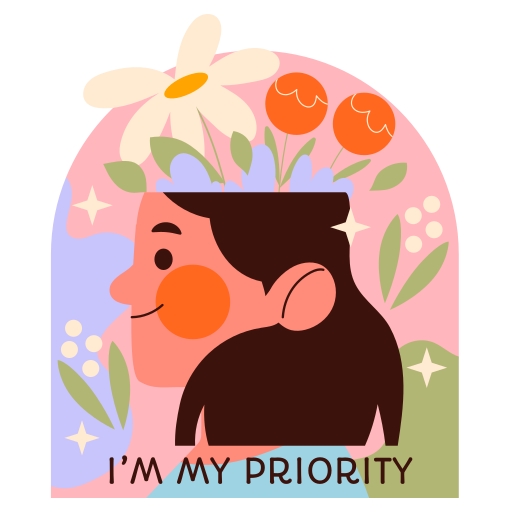Have you ever met someone who seems distant or uninterested in connecting with others? Dealing with an aloof person can feel like trying to crack a secret code! It takes patience, kindness, and good communication skills. By approaching them with an open heart and mind, you might discover a hidden world waiting to be explored.
Understanding why someone is aloof can help you connect with them better. Maybe they're shy, anxious, or just need some space. By being understanding and adjusting how you communicate, you can build a bridge to their world.
So, next time you encounter someone who seems aloof, remember to be patient, show empathy, and listen carefully. Who knows, you might uncover a treasure trove of feelings and thoughts that will deepen your connection with them. So, are you ready to unlock the mystery of aloofness and forge a meaningful bond with someone new?
Understanding Aloof Personality Traits
Understanding the nuances of aloof personality traits provides valuable insights into the complexities of individuals who prioritize solitude and deep connections over superficial interactions. Aloof individuals are not necessarily disinterested in social interactions; rather, they prefer meaningful conversations and authentic connections. Their reserved nature may make you feel like they are detached or unapproachable, but in reality, aloofness is a natural aspect of their personality.
Aloof individuals tend to avoid superficial interactions, gossip, and public displays of emotion. They value independence and intellectual engagement, often forming deep relationships with a select few. Building rapport with aloof personalities requires patience and understanding. Respecting their need for space and allowing them to open up gradually can lead to more meaningful communication. Finding common ground and engaging in intellectually stimulating discussions are effective ways to connect with aloof individuals on a deeper level. By acknowledging and appreciating their unique personality traits, one can forge authentic connections with aloof individuals based on mutual respect and understanding.
Building Empathy and Connection
Moving from grasping the intricacies of aloof personality traits, the focus now shifts towards nurturing empathy and fostering genuine connections with individuals who lean towards solitude and introspection. To build empathy and connection with aloof individuals, consider the following:
- Building Trust: Recognize that trust is paramount for aloof individuals; demonstrate reliability and consistency in your interactions to establish trust.
- Respect Boundaries: Understand and respect their need for personal space and boundaries, allowing them to feel comfortable and secure in the relationship.
- Engage in Deep Conversations: Opt for meaningful conversations that explore their interests, thoughts, and emotions, rather than surface-level small talk.
- Show Genuine Interest: Demonstrate authentic curiosity and empathy towards their perspective, thoughts, and feelings, showcasing a sincere desire to understand them better.
Effective Communication Strategies

When communicating with aloof individuals, it is important to be clear and concise in your interactions to avoid misunderstandings. Active listening techniques can help you understand their perspectives and create a space for meaningful dialogue. By respecting their boundaries and allowing them time to process information, you can foster better communication and build stronger connections.
Clear and Concise Communication
Effectively engaging with an aloof individual necessitates employing clear and concise communication strategies to foster mutual understanding and collaboration. When communicating with an aloof person, it is vital to be direct, specific, and avoid ambiguity. Here are some key strategies to contemplate:
- Use clear and concise language: Avoid ambiguity or mixed messages.
- Be direct and specific: Guarantee understanding and clarity in interactions.
- Avoid overly emotional language: Stick to facts and logical reasoning.
- Provide clear expectations: Outline outcomes and desired actions clearly.
Active Listening Techniques
Interactions with an aloof individual require mastering active listening techniques as a cornerstone of effective communication strategies. Active listening involves giving full attention to the speaker, showing genuine interest, and understanding their perspective. Reflecting back what the person has said to confirm understanding is a key aspect of active listening. Nonverbal cues like eye contact, nodding, and body language signal active listening and encourage the speaker to open up. Asking clarifying questions to probe deeper into the speaker's thoughts and feelings demonstrates active engagement in the conversation. Providing feedback that summarizes the speaker's message helps in reinforcing understanding and building rapport with an aloof person.
| Active Listening | Nonverbal Cues | Clarifying Questions | Providing Feedback |
|---|---|---|---|
| Give full attention | Eye contact | Ask open-ended | Summarize message |
| Show genuine interest | Nodding | questions | to reinforce understanding |
| Reflect back | Body language | Probe deeper into | Build rapport |
| Confirm understanding | thoughts and feelings |
Overcoming Misconceptions About Aloofness
Misconceptions about aloofness often stem from misinterpreting reserved behavior as rudeness or disinterest. By understanding aloof individuals' preference for solitude and limited emotional expression, we can start to change these negative perceptions. Building better connections with aloof people requires acknowledging their need for space and recognizing that their reserved nature is not a personal rejection but a part of who they are.
Understanding Aloof Behavior
Often misunderstood as a lack of interest or a display of superiority, aloof behavior is rooted in a preference for solitude and deep, meaningful conversations over superficial interactions. To understand aloof behavior better, consider the following points:
- Preference for Solitude: Aloof individuals enjoy solitude and value their personal space.
- Dislike for Gossip: They often dislike engaging in gossip or shallow conversations.
- Desire for Deep Conversations: Aloofness is a result of a preference for deep, meaningful discussions over small talk.
- Need for Respectful Boundaries: Understanding and respecting an aloof person's boundaries is crucial for building trust and fostering better communication.
Changing Negative Perceptions
Amidst the misinterpretations surrounding aloof behavior, it is essential to investigate deeper into the underlying motivations and preferences driving such demeanor. Aloof individuals are often unfairly labeled as cold or uncaring, when in reality, their behavior is rooted in a preference for personal space and a desire for meaningful connections. To change negative perceptions, it is essential to understand that aloofness is not a sign of arrogance but a way of engaging intellectually and fostering communication at a deeper level. By recognizing and respecting their need for solitude and limited social interactions, one can begin to build trust and rapport with aloof individuals. Approaching them with patience and allowing them to open up gradually can lead to more fulfilling relationships based on mutual understanding and respect.
Building Better Connections
Interacting with aloof individuals requires a nuanced understanding of their preference for personal space and meaningful connections, paving the way towards building better connections and dispelling misconceptions about their demeanor.
- Understand that aloof individuals value solitude and deep conversations.
- Recognize aloofness as a natural trait, requiring patience and respect.
- Foster communication by finding common ground and engaging intellectually.
- Building meaningful relationships entails time, effort, and understanding their need for space.
Developing Patience and Understanding
Understanding the nature of aloof individuals is important in developing patience and empathy towards their reserved demeanor. Patience is key when interacting with aloof personalities, as they value independence and often find it challenging to express their emotions openly. It's important to approach them with understanding and respect, recognizing that their aloofness is not a personal rejection but rather a part of their nature. Establishing boundaries and allowing them space to open up at their own pace can help build trust and rapport with aloof individuals. Effective communication with them requires clear and concise dialogue, coupled with a respectful attitude towards their need for personal space. By showing genuine interest in their perspectives and engaging with them intellectually, you can foster better understanding and connection with aloof individuals. Developing patience and understanding towards their unique way of interacting can lead to more meaningful and authentic relationships in the long run.
Fostering Authentic Relationships

In fostering authentic relationships with aloof individuals, recognizing and respecting their need for independence and space is crucial to establishing a meaningful connection. Understanding the nuances of their personality types and acknowledging their preference for deep conversations can pave the way for building rapport. Here are key strategies to foster genuine relationships with aloof individuals:
- Respect Boundaries: Acknowledge and honor their boundaries, allowing them the space they require to feel comfortable in social engagements.
- Engage Intellectually: Stimulate their minds by discussing topics of mutual interest, encouraging meaningful conversations that resonate with their intellectual curiosity.
- Demonstrate Respect: Show genuine respect for their unique traits and perspectives, fostering an environment where they feel valued and understood.
- Encourage Openness: Create a safe space for them to express themselves at their own pace, facilitating a gradual but meaningful exchange of thoughts and emotions.
Frequently Asked Questions
What Causes Someone to Be Aloof?
Psychological reasons, social factors, past experiences, and communication styles can contribute to aloofness. Coping mechanisms such as avoidance or detachment may be employed to shield oneself from emotional pain. Understanding these dynamics is essential in addressing aloof behavior.
What Are the Characteristics of an Aloof Person?
An aloof person exhibits reserved body language, struggles with social cues, may lack emotional intelligence, shows limited communication skills, and finds building rapport challenging. Understanding these traits is important for fostering meaningful connections with aloof individuals.
How Do You Engage an Aloof Person?
Engaging an aloof person involves building rapport through active listening, finding common ground, showing empathy, and creating connection. By understanding their need for space and valuing deep conversations, you can foster better communication and meaningful relationships.
How Do You Talk to Aloof People?
When addressing aloof individuals, effective communication techniques, such as active listening and empathetic body language, play a pivotal role. Building rapport through genuine interest and gradual trust-building fosters meaningful connections, encouraging aloof people to open up.

















